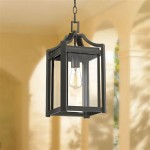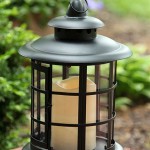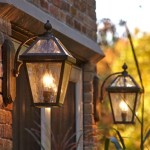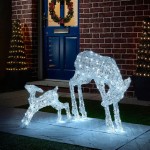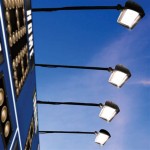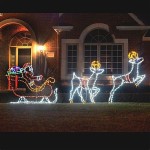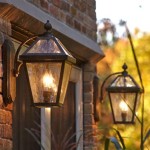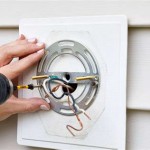Troubleshooting Non-Working Outdoor LED Lights: Essential Aspects to Consider
Outdoor LED lights have gained popularity for their energy efficiency, long lifespan, and aesthetics. However, like any electrical component, they can occasionally encounter issues, leading to non-functioning lights. Troubleshooting such issues can be challenging, but understanding the underlying causes can help identify and resolve the problem effectively.
Here are key aspects to consider when troubleshooting outdoor LED lights not working:
Power Supply:
Verify whether power is reaching the lights. Check for a power outage, tripped circuit breakers, or faulty outlets. Ensure that the lights are receiving adequate voltage by using a voltmeter.
Wiring Connections:
Inspect the wiring connections to ensure they are secure and not loose. Corrosion, loose terminals, and broken wires can disrupt power flow. Tighten any loose connections and replace damaged wires.
LED Driver:
The LED driver converts AC power to DC power suitable for the LED lights. If the driver fails, the lights will not receive power. Replace the faulty driver with a compatible model.
LED Modules:
LED modules contain the individual LEDs that emit light. Over time, LEDs can degrade or fail. Examine the LED modules for any visible damage or discoloration. Replace faulty modules.
Heat Sink:
LEDs generate heat during operation. Overheating can damage the LEDs and shorten their lifespan. Inspect the heat sink for debris or blockages that may impede heat dissipation. Clean the heat sink and ensure adequate airflow.
Ambient Temperature:
Extreme temperatures can affect the performance of outdoor LED lights. Low temperatures can reduce LED efficiency, while high temperatures can cause overheating. Ensure the lights are designed for the ambient temperature range in which they are installed.
Moisture and Water Damage:
Outdoor LED lights are exposed to moisture and rain. Ensure that the lights are properly sealed to prevent water ingress. Inspect for any cracks or gaps in the housing that may allow water to enter.
Photocell or Motion Sensor:
Some outdoor LED lights incorporate photocells or motion sensors to turn on or off automatically. If these devices fail, the lights will not function correctly. Check the photocell or motion sensor for any damage or obstructions.
Conclusion:
Troubleshooting outdoor LED lights not working requires a systematic approach and an understanding of the underlying components. By considering the essential aspects outlined above, you can effectively identify and resolve the issue, restoring your outdoor lighting to full functionality.

Georgeswork Fixing Led String Lights

My Led Strip Lights Are Not Working Instyle S Troubleshooting Guide

Landscape Lights Not Working Solutions To 7 Common Problems

Easy Ways How To Fix Led Lights

How To Repair String Lights Hunker

My Led Strip Lights Are Not Working Instyle S Troubleshooting Guide

My Led Strip Lights Are Not Working Instyle S Troubleshooting Guide

Altair Lighting Led Lantern And Driver Replacement Ledsupply Blog

The 5 Best Lights Of 2024 Reviews By Wirecutter

The Complete Guide To Outdoor Led Strip Lights Lighting Access
